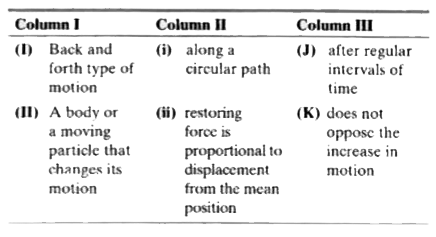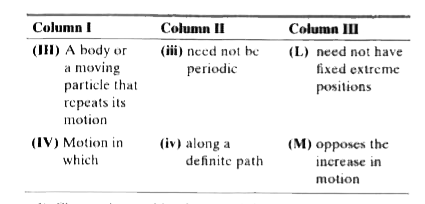In the given table, Columns I and II give statements regarding the velocity and acceleration of particle in different types of motion along a straight line and Column III shows figures depicting the motion.
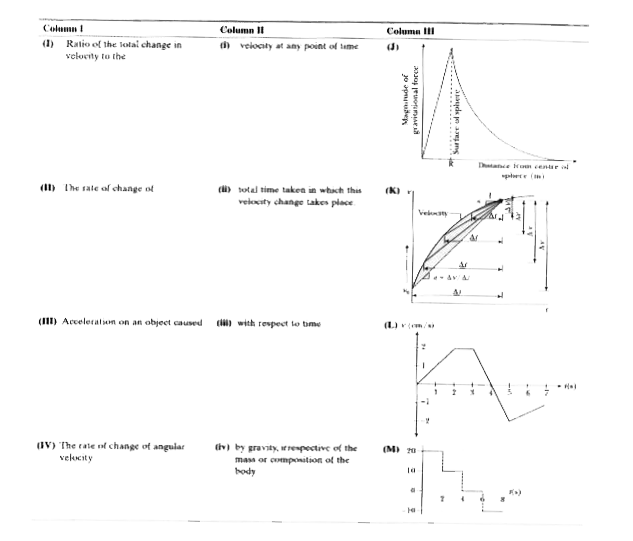
(1) Which combination of statements explains about instantaneous acceleration ?
(a) (III) (iv) (J) (b) (I) (i) (K) (c) (III) (iii) (K) (d) (I) (ii) (L)
(I) (iii) (L)
(IV) (iii) (M)
(IV) (i) (M)
(II) (i) (K)
The correct Answer is:(1)→(d);(2)→(b);(3)→(a)
Topper's Solved these Questions
- BOOK - RESNICK AND HALLIDAYCHAPTER - MOTION ALONG A STRAIGHT LINEEXERCISE - PRACTICE QUESTIONS ( Integer Type )3videos
MOTION ALONG A STRAIGHT LINE
- BOOK - RESNICK AND HALLIDAYCHAPTER - MOTION ALONG A STRAIGHT LINEEXERCISE - PRACTICE QUESTIONS ( Linked Comprehension )15videos
MOTION ALONG A STRAIGHT LINE
- BOOK - RESNICK AND HALLIDAYCHAPTER - MAGNETIC FORCEEXERCISE - Practice Questions (Integer type )7videos
MAGNETIC FORCE
- BOOK - RESNICK AND HALLIDAYCHAPTER - MOTION IN TWO AND THREE DIMENSIONSEXERCISE - PRACTICE QUESTIONS (MATRIX-MATCH)10videos
MOTION IN TWO AND THREE DIMENSIONS
Similar Questions
Knowledge Check
- Question 1 - Select One
In the given table, Columns I and II given statements regarding different types of motion of particle along straight line and Column III shows figures depicting the motion.
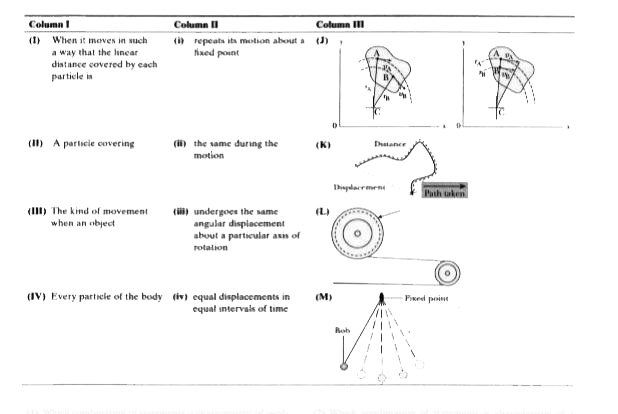
(1) Which combination of statements is characteristic of oscillatory motion ?A(I) (ii) (J)B(III) (i) (M)C(II) (i) (M)D(I) (iii) (J) - Question 2 - Select One
Match the plants in Column I with their features listed in Column II ,III & IV
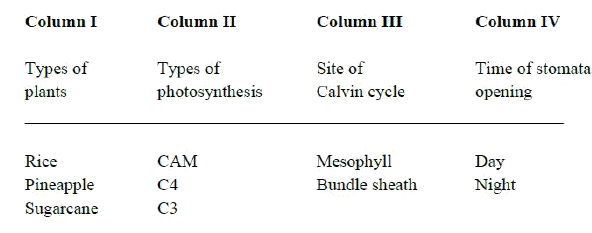
Choose the CORRECT combination .ARice-C3-Mesophyll-Day, Pineapple-CAMMesophyll-Night, Sugarcane-C4-Bundle sheath-dayBRice-C3-Mesophyll-Day, Pineapple-CAMMesophyll-Night, Sugarcane-C4- Mesophyll-DayCRice-C4-Mesophyll-Day, Pineapple-C3- Bundlle sheath-Night, Sugarcane-CAMBundle sheath-DayDRice-CAM-Mesophyll-Day, PineappleCAM-Mesophyll-Day, Sugarcane-C4- Bundle sheath-Day
In the given table, Column I gives type of motion, Column II gives the path traced and Column III gives other characteristic of the motion.
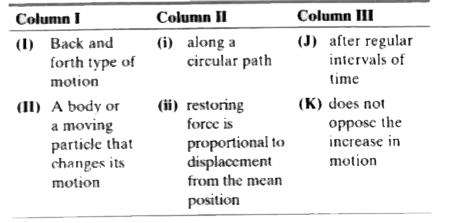

Choose the combination that defines the characteristics of simple harmonic motion.View SolutionIn the given table, Column I gives type of motion, Column II gives the path traced and Column III gives other characteristic of the motion.
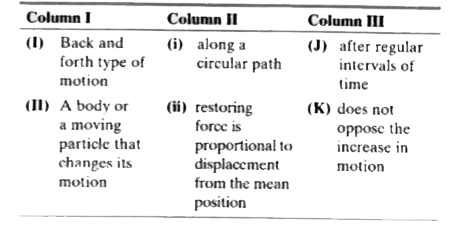

Choose the combination that defines the characteristics of simple harmonic motion.View SolutionIn the given table, Column I gives type of oscillation, Column II gives change in amplitude of oscillation and Column III gives examples of these types of oscillation.

The combination that defines the features of forced oscillation isView SolutionIn the given table, Column I gives type of oscillation, Column II gives change in amplitude of oscillation and Column III gives examples of these types of oscillation.
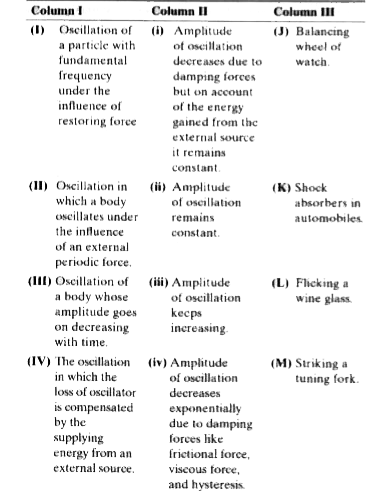
The combination that defines the features of damped oscillation isView SolutionIn the given table, Column I gives type of oscillation, Column II gives change in amplitude of oscillation and Column III gives examples of these types of oscillation.
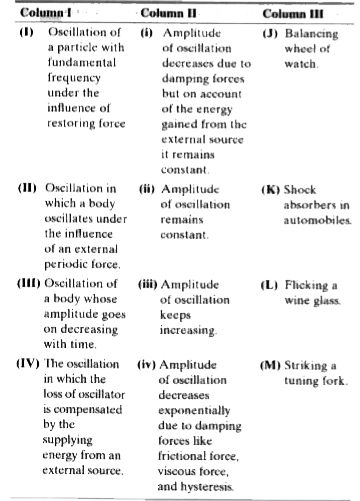
The combination that defines the features of free oscillation isView Solution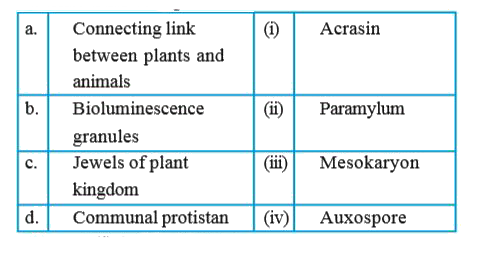
1 a(iii), b(ii), c(i), d(iv)
2 a(i), b(iv), c(i), d(iii)
3 a(iv), b(i), c(iii), d(iv)
4 a(ii), b(iii), c(iv), d(i)View Solution



